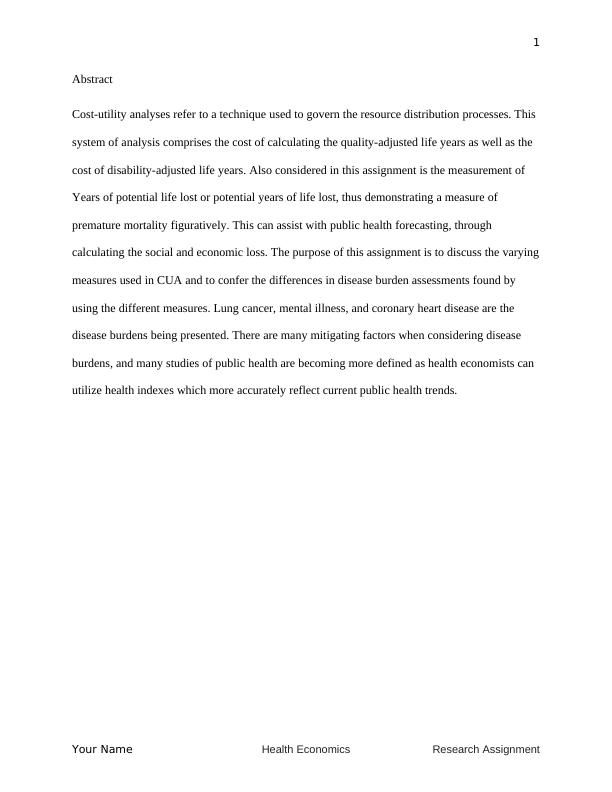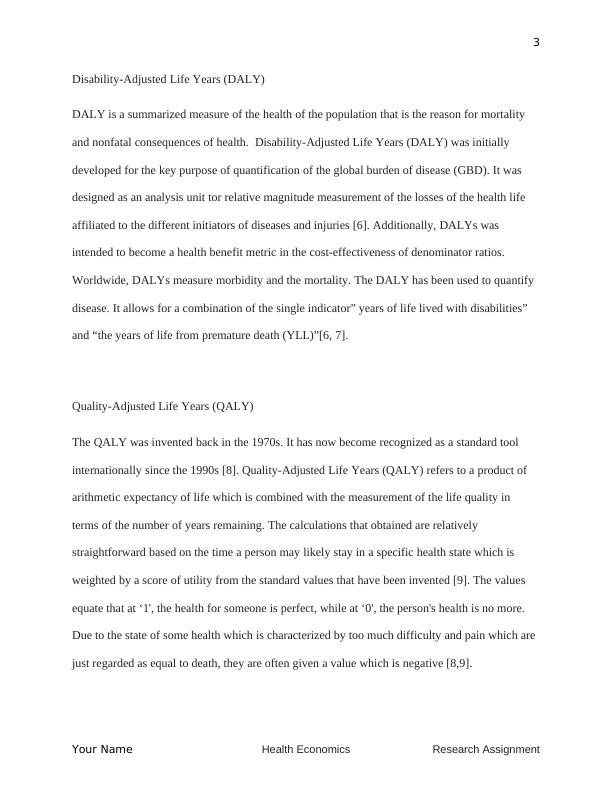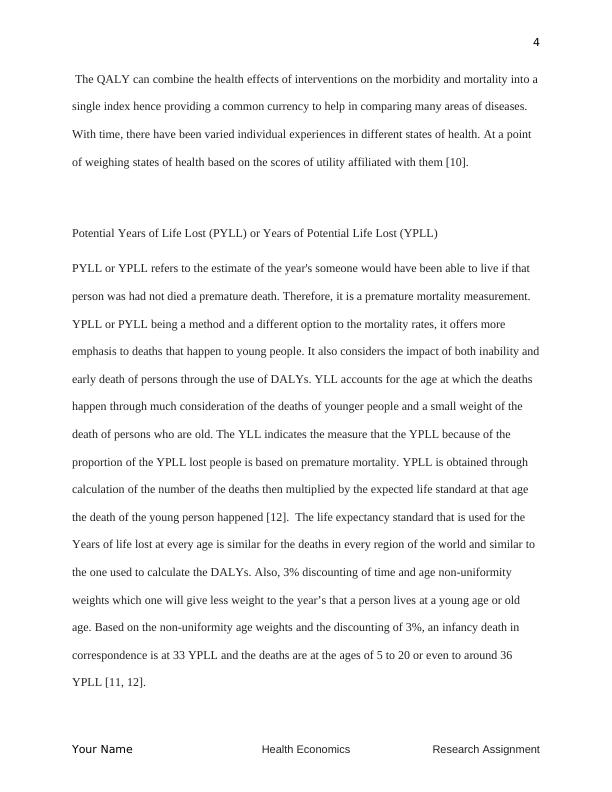Cost-Utility Analyses: Measures and Differences in Disease Burden Assessments
11 Pages3307 Words398 Views
Added on 2022-12-15
About This Document
This assignment discusses the varying measures used in cost-utility analyses (CUA) and the differences in disease burden assessments found by using different measures. It focuses on lung cancer, mental illness, and coronary heart disease as examples of disease burdens. The assignment also explores the benefits and applications of CUA in informing health practitioners and society for decision-making processes.
Cost-Utility Analyses: Measures and Differences in Disease Burden Assessments
Added on 2022-12-15
ShareRelated Documents
End of preview
Want to access all the pages? Upload your documents or become a member.
Cost-Utility Analyses in Public Health: Measures and Differences in Disease Burden Assessments
|10
|3252
|401
QALY and DALY
|4
|547
|76
Measuring the Global Burden of Disease
|4
|666
|417
Public Health Assessment: Cost-Utility Analysis vs Cost-Benefit Analysis
|14
|4212
|202
Global Health GLOBAL HEALTH 1 Age at death and disability
|10
|2878
|82
Health Economic Analysis and Evaluation
|5
|711
|236




